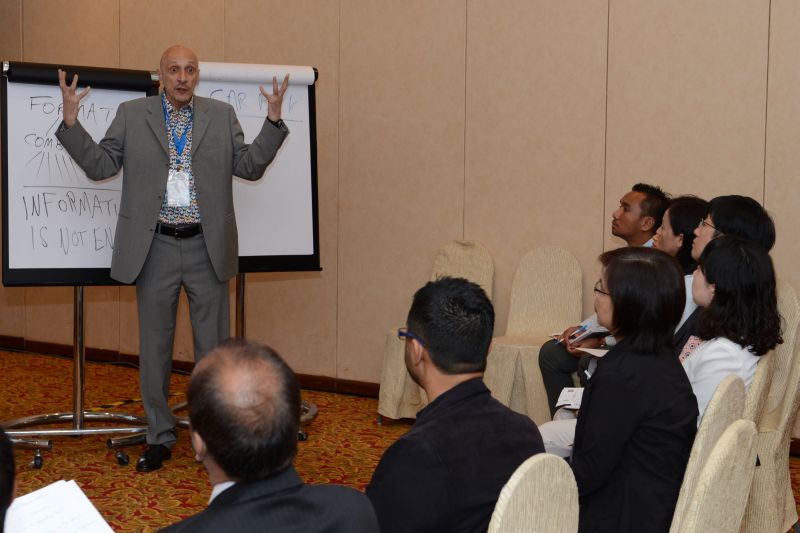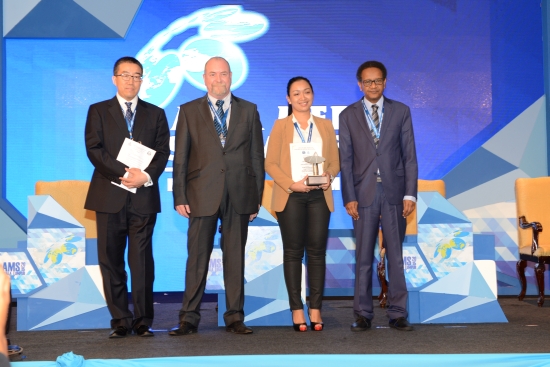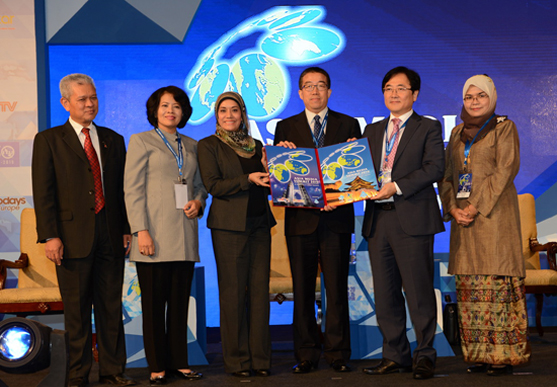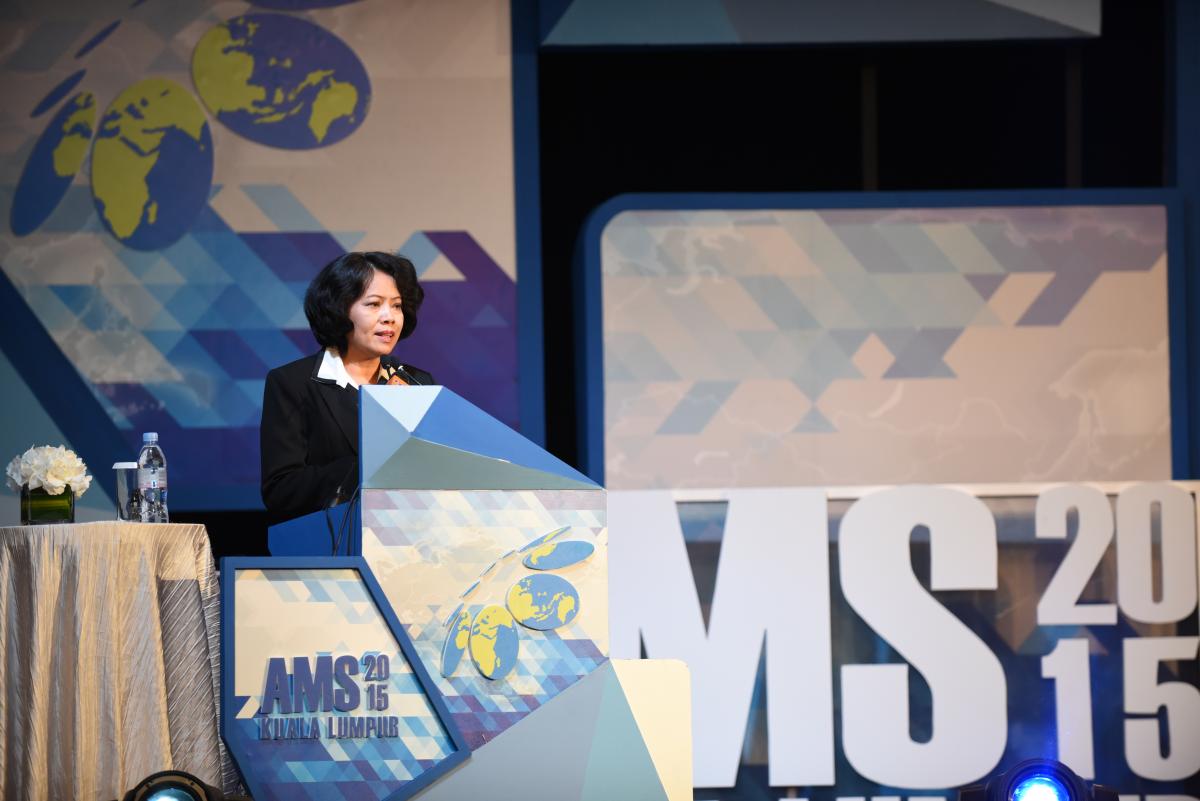


Cross Media Formats and Format Innovation Workshop
AIBD at Broadcast Asia 2015
To keep up with the technological innovations, gain knowledge and empanel more resource persons… AIBD once again took part in Broadcast Asia 2015, which was held between 2 to 5 June in Singapore. The 20th edition of the conference gathered leading broadcast players. It had representation from more than 70 countries and over 16,000 visitors, speakers and exhibitors, all put together.
Winners Awarded at the Asia Media Summit 2015
‘Pagbangon’ from Philippines and ‘Extreme Weather’ from Australia won the World Television Awards 2015 under Humanity and Science / Environment categories, respectively.
AIBD/RTM In-Country Workshop on DVB-T2 Transmission
The In-Country workshop on Digital Video Broadcasting - Terrestrial (DVB-T2) was organised by AIBD with support from Radio Television Malaysia (RTM) was held in Kuala Lumpur, Malaysia from 11 to 15 May 2015. The workshop was designed specifically for broadcast engineers/technicians associated with planning, implementation, operation and maintenance of digital television broadcasting. The workshop also covered various techniques and parameters of DVB-T2.
Succesful In-Country Workshop on ‘Developing Cross Media Story-based Strategies for Journalism or Marketing’
Asia-Pacific Institute for Broadcasting Development (AIBD) with the support of Goethe-Institut (Malaysia) and the Nottingham University (Malaysia campus) organised an In-Country workshop on 'Developing Cross Media Story-based Strategies for Journalism or Marketing' on 29 May 2015 in Kuala Lumpur, MalaysiaCCCoo
Korea to host AMS 2016
Korea promises that the next Asia Media Summit to be held in Seoul from 24 - 26 May 2016 will be a fruitful, exciting and meaningful event.
Delivering Great Social Media Experiences
Laura-May Coope, Co-founder and Manager of Social Life, BBC, United Kingdom, urged radio broadcasters to derive maximum benefits from social media by inviting their listeners and fans in making them feel special and valued, creating emotional connections, and offering them rewards.
Big Challenges for Broadcasters
Dato’ Sri Ahmad Shabery Cheek, Minister of Communications and Multimedia of Malaysia, raised the possibility that viewers might stop watching TV in the traditional sense unless broadcasters dealt seriously with new trends impacting their industry, among them; the rising popularity of over-the-top or OTT services, the reach and influence of social media, and evolving media consumption behaviour.
Digital Transition in Asia-Pacific
Transition to DTTB services is a complex process yet necessary for broadcasters to remain in business in the longer term. Broadcasters who delay digital switchover transition will lead to increased costs and loss of revenues.
AIBD President Urges Broadcasters to Embrace Social Media
The 12th Asia Media Summit formally opened on 26 May 2015 in Kuala Lumpur, Malaysia, focused on the important role social media plays in transforming broadcasting into a stronger platform fit for now and the future











